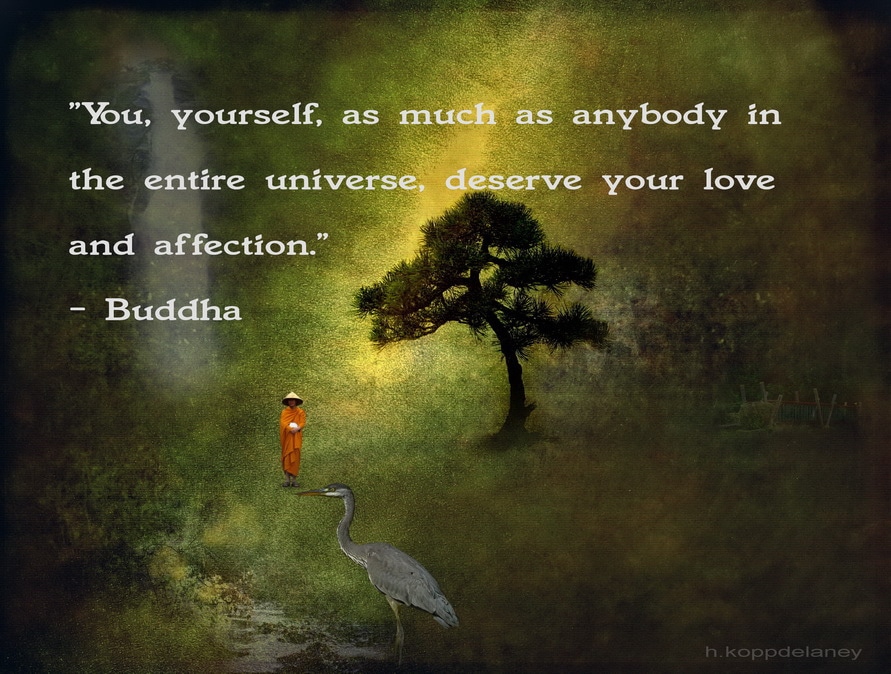Musical sounds can focus the mind/body connection as a door way into deeper meditation. Music, bells, drumming, chanting and other various sounds have been used to enrich the mind, body and spirit for thousands of years.
Each person and culture use music in their own way but it is usually for the same basic purpose; calming, insight, vision, inspiration, and hope.
The word meditation is often used like the word exercise. Meditation is caring for the mind and spirit, as we would exercise for the body. Many times what is considered meditation is actually a trance state, shamanic journeying, hypnotic induction, prayer, contemplation or even dissociation. As I said in the previous post there are probably thousands of meditations.
The meditation styles that have come from the east will commonly use chanting, bells, and drumming before and after the meditation. During the meditation there is just the sounds from the external environment and the sounds from the internal environment; such as, talking to ourselves, feelings that can coo and scream, and memories that can start as whispers and then turn into spoken words.
The music and sounds used for meditation get us ready to be with the sometimes unbearable sound of silence and the pleasures and disturbances that accompany it. Just being with what is, both externally and internally, is the practice of meditation.
Too often music and sounds can separate us from being in our own skin. For example, the sounds of nature can bring us to ourselves and refresh our perspective fairly quickly. Where as certain kinds of music can make us want to jump out of our skin. What music and sounds relax you?
What is the best music for meditation? 
Presently, there is a style of music called “meditation music” that many people find useful. Some of the music is related to the eastern meditation traditions of Japanese Zen, Southeast Asian Buddhism, Hinduism, and Tibetan Buddhist cultures. Music from the Native American tradition with flute and natural sounds is excellent. Also, “new age” style music with electronics, voice, and sounds of nature is very relaxing and spacious.
There is music that has a guided meditation within the soundtrack. The point is to find what you like and what works for you. The best is that which you actually use regularly until you are ready to move on to something else.
Meditation music for sleep
Some of this same music can also be used as meditation music for sleep. This provides some transition from the waking state to sleeping state which requires some slowing down and letting go of mental and physical activity.
Relaxing meditation music
Any music that helps one to relax is fine. Relaxing is always a part of meditation. In fact, relaxing throughout the day with or without music is essential before the stress is too great. It is not necessary to actually take a meditation break but just be aware of the rise and fall of inner tension, breathing it in and letting it go throughout the day.
Music first then silent meditation 
Try listening to some meditation music that you enjoy. When the music ends stay with the silence and stillness that has been created through the music. Relax in this stillness letting internal or external sounds come and go, lightly feeling the breath to stay in the body.
Listening to the silence
This is a very useful meditation especially early in the morning or late at night when there are less sounds.
Begin listening to the silence at the end of the meditation music, just as you would hold your mind on a favorite piece of music. When the mind wanders off, repeatedly bring it back to the silence.
As well as listening to the silence, feel the stillness. Feeling the stillness, just as we feel the music we love helps embody this rested and relaxed state.
A little at a time, the struggle to obsessively think and worry about various things will drop off. In the beginning we are directing the mind to focus on silence and the silent background of sound, rather than the sound itself or the sound of the chattering mind.
It can seem like we are rejecting or repressing sound but it is not that at all. We are just moving our attention toward the background of sound so there is more of a balance. Usually, as people, we get lost in the foreground. The imbalance causes external and internal sounds to become noise and irritation.
As we are mindful of the background of silence. A sound may appear out of this silence, then end and more silence. Or there may be a constant sound; such as, traffic or blowing wind but we can still be aware of the silent back ground of the various sounds.
There is more silence than sound in the morning and night which gives us an opportunity to balance silence and the sounds of the day. Even in the silence there are sounds; such as, wind, traffic noise, crickets or the creaking of the house. In the day time there is more sound than silence and it is difficult to notice the silent background.
Life is a little easier as background and foreground are more balanced. It provides the strength and insight to then work with internal emotional problems as well as external relationships with people, money, parenting, illness, etc. The bad news is that it takes consistent effort. That is why it is like exercise. 
Therefore, meditation music, guided meditation, silent meditation or just taking a hike in nature or sitting by your favorite tree can be enough. This is not a big heroic effort but a life style that respects our basic individual needs and those of others. Self respect is caring for our spirit from moment to moment. Then we can care for others with more quality.

